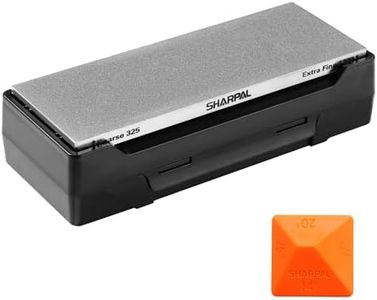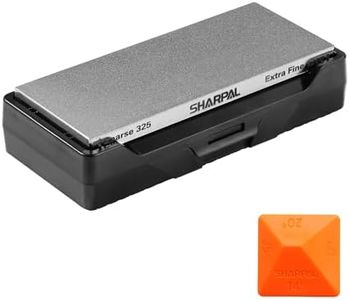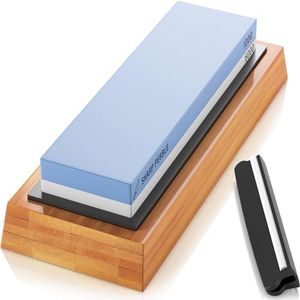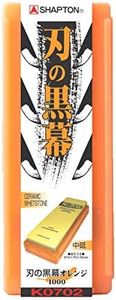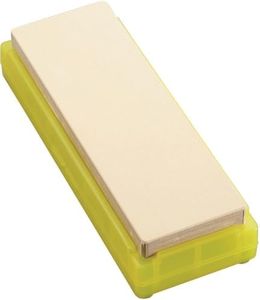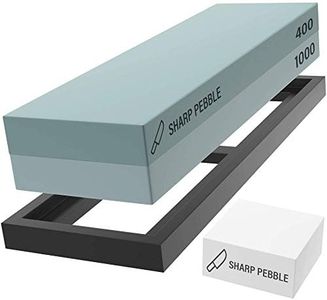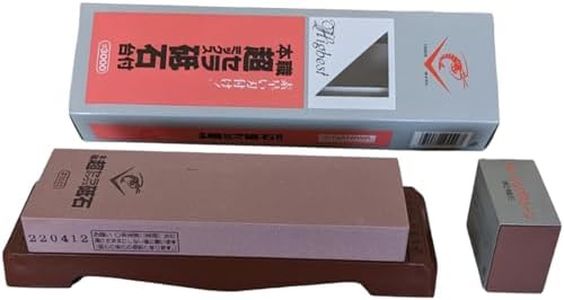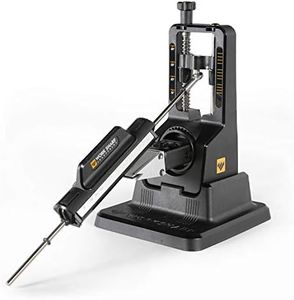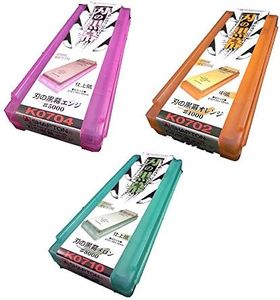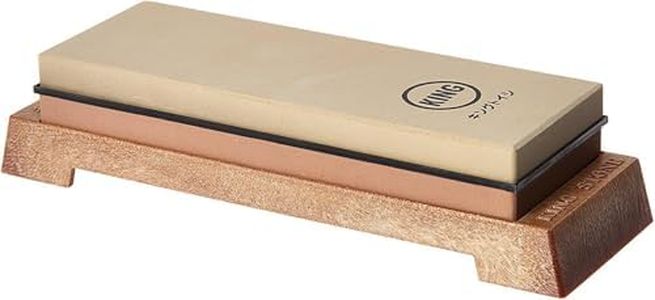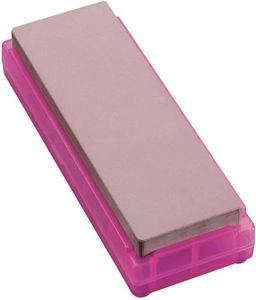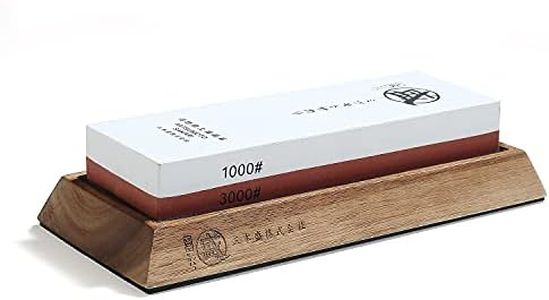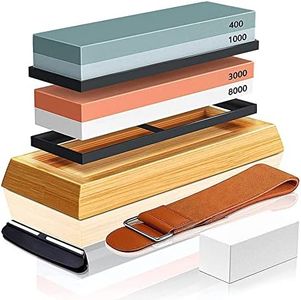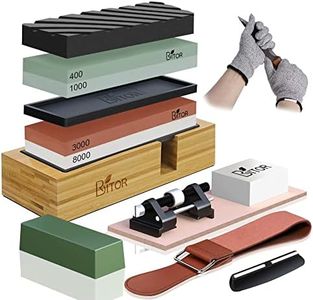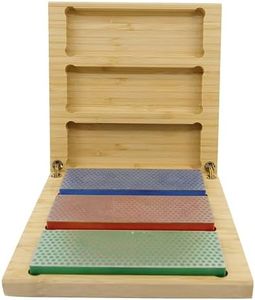We Use CookiesWe use cookies to enhance the security, performance,
functionality and for analytical and promotional activities. By continuing to browse this site you
are agreeing to our privacy policy
10 Best Whetstone Knife Sharpener
From leading brands and best sellers available on the web.Buying Guide for the Best Whetstone Knife Sharpener
Choosing a whetstone knife sharpener is about finding the right balance between sharpening effectiveness and ease of use. Whetstones come in different materials and grits, and the best one for you will depend on the types of knives you have and how dull they tend to get. It's important to understand a few key specifications so you can select the product that matches your needs without making things too complicated.Grit LevelGrit level refers to how coarse or fine the abrasive surface of the stone is. Lower numbers (like 200-400) are coarse and useful for repairing very dull or chipped edges, while medium grits (around 800-1000) are great for regular sharpening. Fine grits (3000 and above) are mostly for finishing and polishing. If you just want to keep your kitchen knives in good condition, a medium grit is usually enough. If you plan to restore old or very dull tools, you'll want a coarse stone, and for a super smooth edge, add a fine finishing stone.
Stone MaterialWhetstones are made from natural or synthetic materials. Synthetic stones tend to be more consistent and easier to use for beginners, while natural stones can deliver a slightly finer edge but might require more care or skill. If you're just starting out, synthetic stones are a practical choice; if you’re looking for traditional methods or have experience, natural stones might appeal to you.
Stone SizeThe physical size of the stone affects how easy and safe it is to use. A larger stone gives you more room to work, making sharpening faster and more comfortable, especially for larger knives. Smaller stones are more portable but can be harder to use, especially with big blades. For general home use, a medium or large stone is usually easiest to handle.
Double-Sided vs Single-SidedSome whetstones have two different grit levels, one on each side, making them more versatile. This means you can do both coarse sharpening and fine finishing with the same stone. Single-sided stones are often more durable and can be simpler if you always use the same grit. If you want one stone to do most jobs, a double-sided stone is convenient. If you only need maintenance or prefer a simpler tool, a single-sided one can be preferable.
Water vs Oil StoneWhetstones require either water or oil as a lubricant to work well. Water stones are easier to use and clean, which makes them popular for most home users. Oil stones are usually a bit slower but can give a more polished edge and last longer. If you want something quick and easy, water stones are usually better. If you want traditional sharpening with a slower pace and don't mind cleanup, oil stones can be a good fit.
Holder/Base StabilityA good holder or non-slip base keeps the stone from moving around during sharpening, which makes the process safer and results more consistent. Some stones come with a rubber or silicone base, while others are just the stone itself. If you're new to sharpening or want extra safety, get a stone with a secure base or plan to buy one separately.
